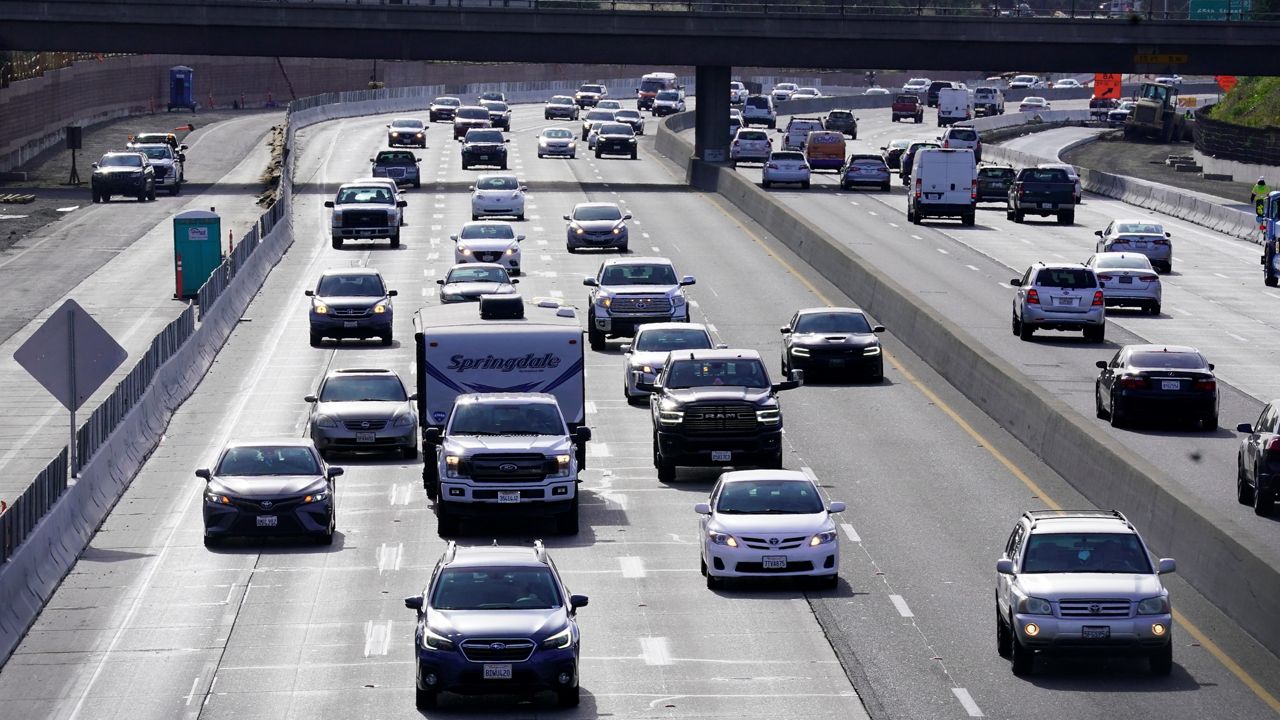LOS ANGELES — As electric vehicle sales reach record highs in California, the Air Resources Board is considering changes to the Clean Vehicle Rebate Project that has helped hundreds of thousands of residents buy in. On Wednesday, the ARB outlined some changes it’s considering for the program that would shift the focus to help lower-income buyers, including prepaid EV charging cards and increased rebates.
“The first wave of EV adopters is well established,” ARB Pollution Specialist Raquel Leon said during a public working group to discuss possible program changes. “That allows CVRP to pivot its focus to the buyers who need additional support to make the switch to electric.”
The ARB is considering the changes following an unprecedented surge in EV sales in the state. Zero-emissions vehicles now make up 16.32% of new vehicle sales, according to the California Energy Commission. A record 81,292 EVs were sold during the first quarter, with Tesla making up two-thirds of the market.
Since the Model 3 was introduced, Tesla represents 55% of the state’s EV rebates, according to the Center for Sustainable Energy, which administers the CVRP for the California Air Resources Board. But the Elon Musk startup raised prices on its models this year, making all of its vehicles ineligible. That’s had the unintended effect of making far more funds available to buyers of different EV makes and models, allowing the CVRP to shift its support to lower- and middle-income car buyers while simultaneously supporting the adoption of upcoming zero emissions vehicle models.
Last November, the Air Resources Board voted to phase in changes to the program, starting in February 2022 and continuing with a second round of changes one year later. Earlier this year, California lowered the price cap for eligible vehicles to a manufacturer’s suggested retail price of $45,000 for cars. It also lowered the income caps for eligible buyers from $150,000 to $135,000 for single filers, from $204,000 to $175,000 for heads of household and from $300,000 to $200,000 for joint filers.
Next year’s changes include an additional income cap reduction, a $250 decrease in the rebate amount and making plug-in hybrid electrics ineligible. Those changes could, however, be tabled, based on continued analysis of the zero-emissions vehicles market and updates to funding projections for the CVRP program.
The changes that have already occurred are projected to yield a 23% reduction in applications for the CVRP program because of the lowered income caps and a 70% reduction in battery-electric vehicle applications because Tesla no longer qualifies, according to the Center for Sustainable Energy.
To help spur EV adoption with lower-income buyers, ARB is currently considering a prepaid charge card for use at public charging stations that would be issued with every rebate, similar to the $500 charge card offered through the state’s Clean Cars For All program. The exact amount that would be available through the CVRP is up for debate.
The ARB is also looking at increasing the rebate amount. How much isn’t yet determined, but Jonathan Changus, with the Center for Sustainable Energy, said a $500 increase “won’t drain the coffers. Without the Tesla volume, which has driven demand for the program since the launch of the Model 3 in 2018, other automakers have not had anywhere close as significant an effect on program demand. There is a situation here where funding demand has gone way down, and we have an opportunity to explore what that means.”
The ARB is also looking at expanding a statewide prequalification that would allow low-income car buyers to apply for a rebate in advance of their zero-emissions vehicle purchase so they can use the incentive at the point of sale.
“We don’t want to make too many drastic changes to the program at this time,” Leon said, “but we want to be responsive to the projections and what we know the market looks like now.”
Current rebate amounts are $750 for the purchase or lease of new battery-powered motorcycles, $3,500 for plug-in electric hybrids, $4,500 for battery-electrics and $7,000 for hydrogen-fuel cell EVs.
While electric vehicles are less expensive than when they first came to the market in 2010, they still cost more than comparable gas-powered models. Prices range from a low of $27,400 for a Nissan Leaf to $189,000 for a Porsche Taycan Turbo S Cross Turismo. The bestselling EV on the market — the Tesla Model Y — starts at $62,990.
California initially created the Clean Vehicle Rebate Project in March 2010 to incentivize the market, just before the Nissan Leaf and Chevrolet Volt went into production and ushered in the modern-day EV era.
The CVRP rebates were “extremely important” in making it possible to acquire a plug-in EV for 48% of EV buyers in 2017, when only a small handful of electric vehicles were available. According to the Air Resources Board, 57% of California EV buyers would not have made the purchase without it.
The CVRP has helped the state achieve its goal of 1 million EV sales by 2023 earlier than expected. While the state is expected to fall short of the next target — 1.5 million EVs sold by 2025 — it is on track to hit 5 million EV sales by 2030, according to the Center for Sustainable Energy.
Last July, the state budget allocated $525 million to the CVRP — an amount that needed to be stretched for three years. At that time, CVRP administrators said $650 million was needed to meet projected demand, but Tesla’s ineligibility has radically altered the math.
The Air Resources Board will release its draft proposal for the CVRP program in July and vote on its final proposal for the 2022-2023 fiscal year in November.
CORRECTION: An earlier version of this article incorrectly stated the percentage of CVRP rebates given to Tesla buyers and the change in rebate amount. The errors have been corrected. (May 13, 2022)



